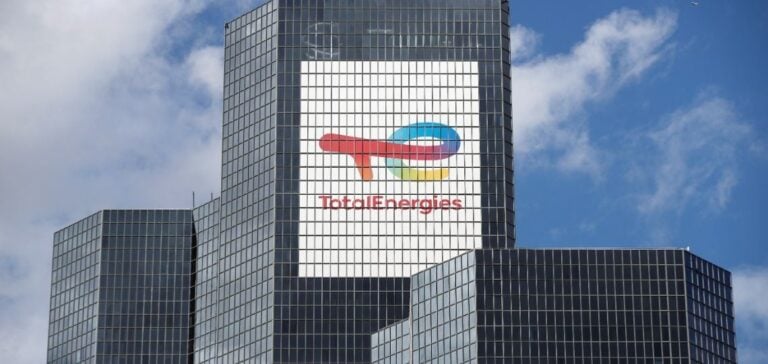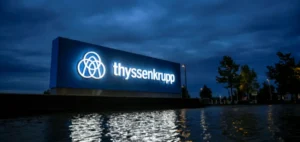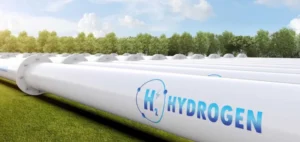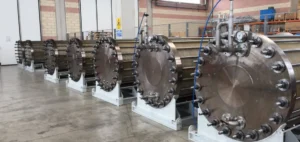The French group TotalEnergies announced the signing of a preliminary land reservation contract with Morocco to launch the “Chbika” project, a major green hydrogen production initiative in the Guelmin-Oued Noun region, located on Morocco’s southern Atlantic coast. This first phase, dedicated to the development of renewable capacities, will include 1 GW of solar and onshore wind power. These installations will be used to produce green hydrogen through the electrolysis of desalinated seawater.
The project was unveiled during the French President Emmanuel Macron’s visit to Rabat, strengthening energy ties between Morocco and Europe. TotalEnergies states that this step will allow for the completion of preliminary studies before the concrete development of infrastructure begins.
A Green Ammonia Project for the European Market
The “Chbika” project aims for an annual production of 200,000 tons of green ammonia, derived from the green hydrogen produced. This ammonia production will be primarily destined for European markets, reinforcing Morocco’s export capacities in renewable energy. This approach aligns with TotalEnergies’ strategy of leveraging renewable resources available in competitive countries like Morocco to create green energy flows directed towards Europe.
TE H2 and Copenhagen Infrastructure Partners in Charge of Production
The consortium behind this project brings together TE H2, co-founded by TotalEnergies and the Austrian group EREN, with the support of Copenhagen Infrastructure Partners (CIP), a specialized player in wind energy. TE H2 and CIP will lead the development of solar, wind, and hydrogen production facilities. Meanwhile, the Danish shipping company A.P. Møller Capital will oversee the construction of the port and the logistics infrastructure needed for the transport and export of green ammonia.
A Global Production Center in Prospect
TotalEnergies envisions this first phase as laying the foundation for a future large-scale green hydrogen production center in the Guelmin-Oued Noun region. By developing infrastructure capable of producing renewable energy and transforming hydrogen into exportable derivatives, the project aims to position Morocco as a strategic hub for the Mediterranean’s energy transition.
This initiative also aligns with Morocco’s ambitions to become a key player in green hydrogen. By strengthening its renewable capacities and attracting foreign investment, the country seeks to diversify its energy sources while integrating itself into global green energy production circuits. The green ammonia production, planned within this partnership, could thus open new export and industrialization opportunities for Morocco, enhancing its position in the green hydrogen market.






















